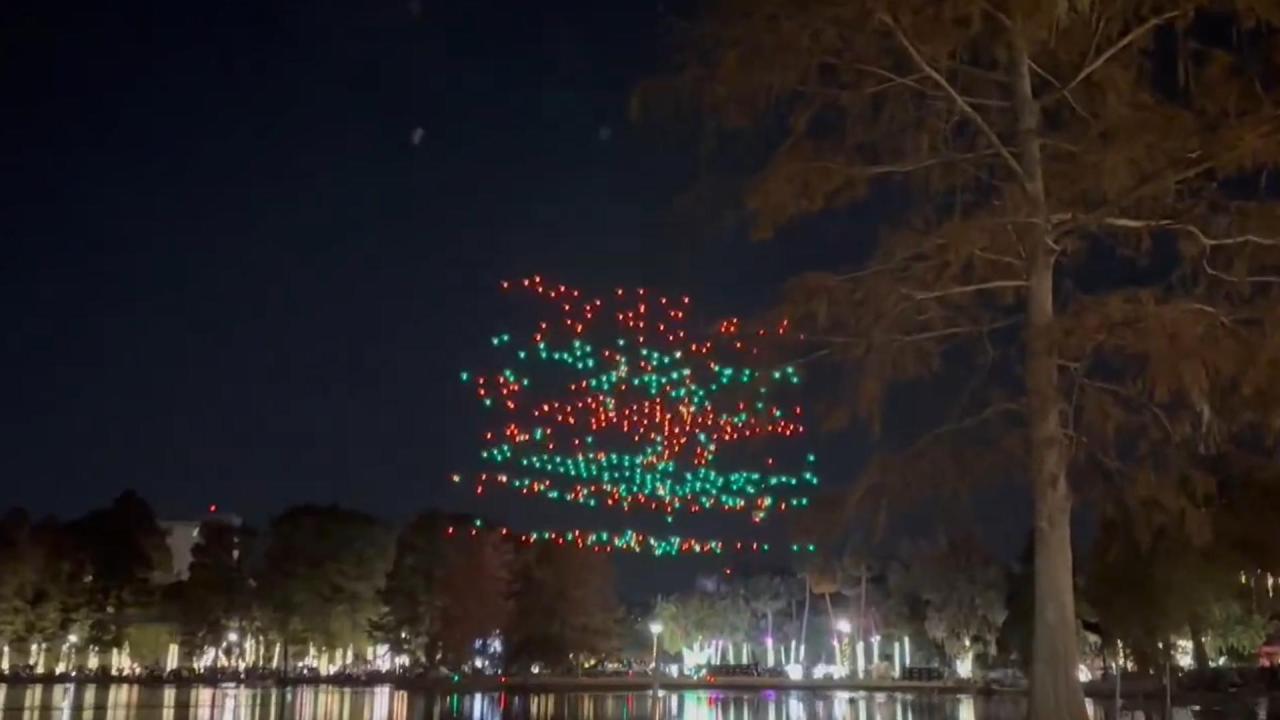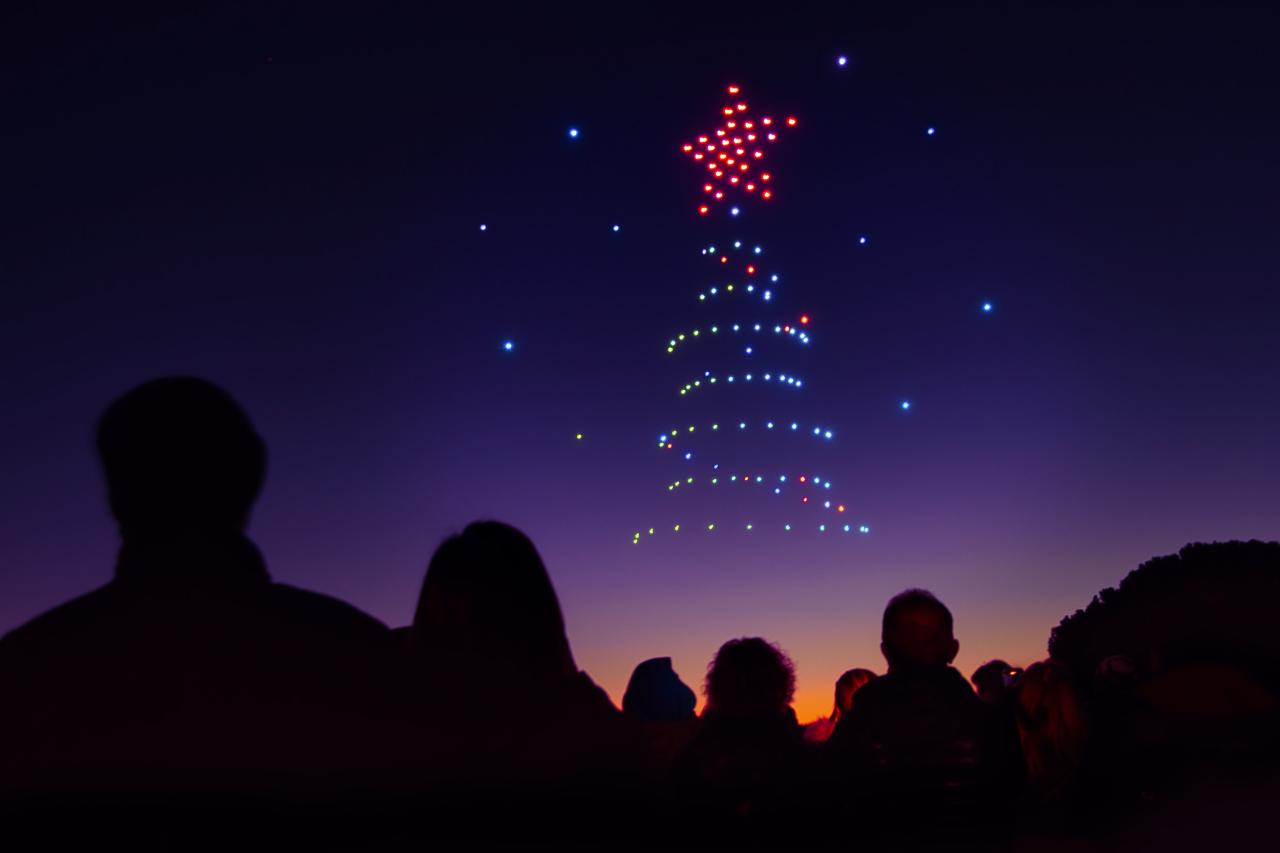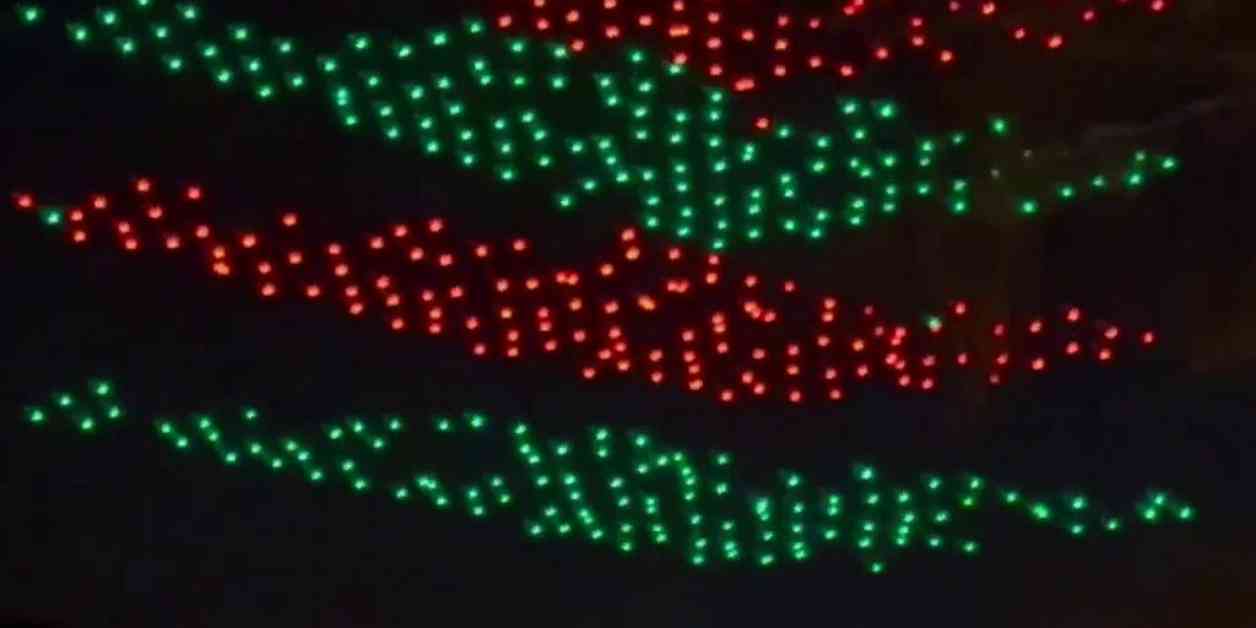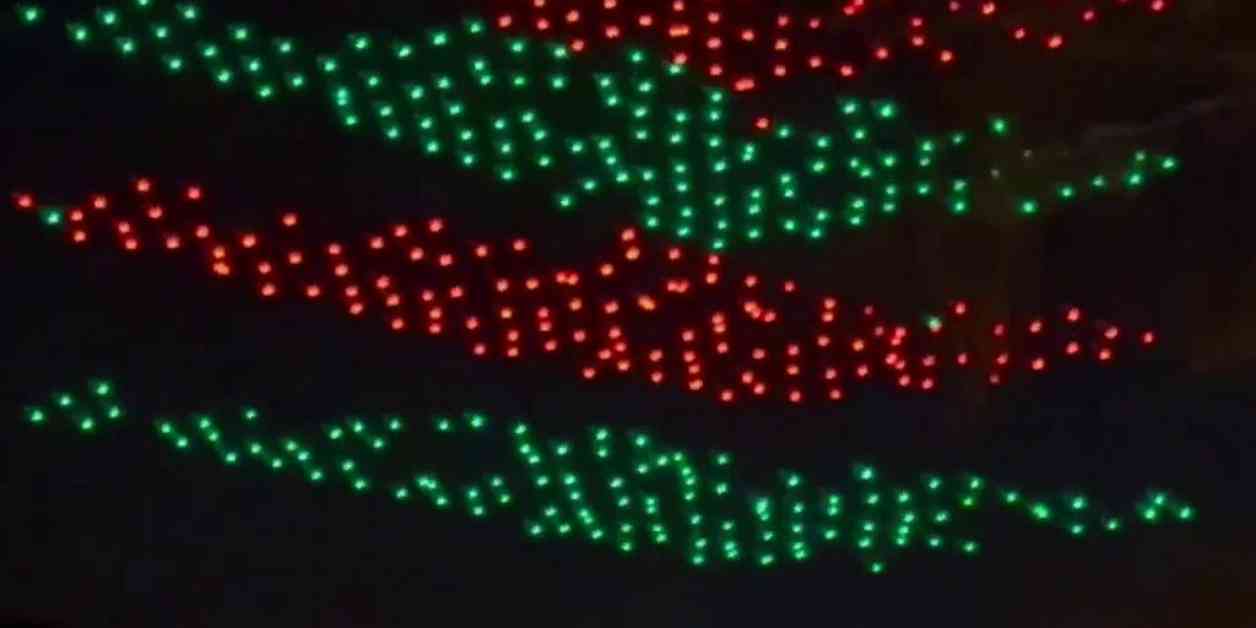Drone show accidents, while relatively rare, highlight critical safety concerns within the rapidly evolving world of drone technology. These incidents, ranging from minor malfunctions to catastrophic failures, underscore the need for stringent safety regulations, advanced technological safeguards, and meticulous pilot training. This analysis delves into the multifaceted causes of such accidents, examining technological limitations, human error, environmental factors, and the crucial role of post-accident investigation and preventative measures.
From mid-air collisions caused by GPS interference to uncontrolled descents resulting from software glitches, the potential consequences of drone show accidents are significant. Understanding the various contributing factors, including inadequate pilot training, adverse weather conditions, and even the limitations of current drone technology itself, is crucial to mitigating future risks and ensuring the continued safe and responsible operation of drone shows.
Drone Show Accidents: A Comprehensive Analysis
Drone shows, with their captivating displays of synchronized aerial choreography, have become increasingly popular. However, the inherent complexities of operating multiple drones simultaneously present significant safety challenges. This analysis delves into the various aspects of drone show accidents, exploring their causes, prevention strategies, and the crucial role of safety regulations and technological advancements.
Types of Drone Show Accidents
Drone show accidents encompass a range of incidents, from minor malfunctions to catastrophic failures. Common causes include mid-air collisions resulting from navigation errors or communication disruptions, uncontrolled descents due to battery failures or system glitches, and complete system failures stemming from software bugs or hardware malfunctions. Different types of drones, varying in size, capabilities, and technical specifications, have been involved in these incidents.
For example, smaller quadcopters might experience more frequent software glitches, while larger, more complex drones might be susceptible to more severe mechanical failures. The following table summarizes several accident scenarios:
| Accident Type | Cause | Drone Model (Example) | Outcome |
|---|---|---|---|
| Mid-air Collision | GPS signal interference, software error leading to inaccurate positioning | DJI Matrice 300 RTK | Multiple drones damaged, show interrupted |
| Uncontrolled Descent | Battery failure, loss of signal | Autel EVO II Pro | Drone crash, minor property damage |
| System Failure | Software glitch, motor malfunction | Intel Shooting Star | Complete show failure, requiring a reschedule |
| Fire | Battery overheating | Generic consumer drone | Drone destroyed, potential for property damage |
Safety Regulations and Protocols
Stringent safety regulations and well-defined protocols are paramount for preventing drone show accidents. Successful drone show companies often implement comprehensive safety protocols, including rigorous pre-flight checks, redundant communication systems, and meticulous flight planning that accounts for potential hazards. Regulatory frameworks vary across countries, with some having more established guidelines than others. Pilot training and certification play a crucial role, ensuring pilots possess the necessary skills and knowledge to handle emergencies and navigate complex scenarios.
For instance, some countries mandate specific flight hours and theoretical knowledge tests before granting drone show operator licenses.
Technological Factors Contributing to Accidents

Technological limitations in drone systems contribute significantly to accident risks. GPS interference from external sources, software glitches, and unpredictable battery failures are major concerns. Communication system reliability is also critical; loss of signal can lead to uncontrolled drone behavior. To mitigate these risks, a hypothetical improved drone system might incorporate redundant GPS modules, fail-safe mechanisms triggered by low battery levels, and advanced error-correction software.
Furthermore, enhanced communication protocols with built-in redundancy could significantly improve system reliability.
Human Error and its Role
Human error, encompassing pilot negligence, inadequate planning, and poor risk assessment, remains a leading cause of drone show accidents. Examples include pilots failing to conduct thorough pre-flight checks or disregarding weather warnings. To minimize human error, improved training programs, comprehensive checklists, and robust risk assessment procedures are essential. The following flowchart illustrates a simplified decision-making process for a pilot during an emergency:
- Emergency Detected: Loss of signal, malfunctioning drone, etc.
- Assess Situation: Determine the severity and potential impact.
- Initiate Emergency Procedures: Implement pre-defined protocols, such as emergency landing or fail-safe mode.
- Communicate: Inform ground control and other relevant parties.
- Post-Incident Actions: Secure the area, document the incident, and report to authorities.
Environmental Factors
Weather conditions and environmental obstacles significantly influence drone show safety. Strong winds can affect drone stability, while rain can impair visibility and damage electronics. Buildings, trees, and other obstacles can disrupt flight paths and cause collisions. Electromagnetic interference from external sources, such as radio towers, can also interfere with drone navigation and communication.
Recent drone show accidents highlight the need for robust safety protocols. The potential for mishaps underscores the importance of high-quality monitoring equipment, such as the impressive capabilities offered by the cobequid pass camera , which could provide crucial real-time data during such events. Analyzing footage from systems like this could significantly improve future drone show safety procedures and prevent similar incidents.
- Wind: Strong winds can cause drones to drift off course or become unstable, leading to collisions or crashes.
- Rain: Rain can reduce visibility and damage electronic components, leading to malfunctions.
- Obstacles: Buildings, trees, and other obstacles can obstruct flight paths and cause collisions.
- Electromagnetic Interference (EMI): EMI from external sources can disrupt drone communication and navigation systems.
Post-Accident Procedures and Investigations

Standard procedures for investigating drone show accidents include thorough data retrieval from flight recorders and onboard sensors, analyzing flight logs, and interviewing witnesses. Accident reporting is crucial for identifying recurring issues and implementing preventative measures. Effective post-accident response strategies focus on securing the scene, preventing further damage, and ensuring the safety of personnel. A step-by-step emergency response guide would include immediate drone shutdown commands, securing the crash site, contacting emergency services, and initiating a comprehensive investigation.
Insurance and Liability

Drone show operators should secure comprehensive insurance coverage to mitigate financial risks associated with accidents. This coverage should encompass liability for property damage, injuries, and potential legal costs. Legal liabilities can extend to significant financial penalties and legal proceedings in cases of negligence or operational failures. Examples of legal cases involving drone show accidents and their outcomes would highlight the importance of adhering to safety regulations and maintaining appropriate insurance.
Recent drone show accidents highlight the potential risks associated with large-scale drone operations. The increasing sophistication of drone technology, however, also raises concerns about malicious use, as evidenced by the recent kazan drone attack , which underscores the need for robust safety protocols and countermeasures. Ultimately, minimizing the chances of future drone show accidents requires a comprehensive approach to both technical and security aspects.
A sample insurance policy would detail coverage for liability, property damage, and potential legal fees.
Public Perception and Risk Communication

Drone show accidents can negatively impact public perception of drone technology. Effective risk communication strategies are crucial for rebuilding public trust. Transparency and accountability in addressing accidents, including open communication with the public and thorough investigations, are essential. A sample press release addressing a hypothetical accident would emphasize the company’s commitment to safety, the steps taken to address the incident, and the measures implemented to prevent future occurrences.
The safe and successful execution of drone shows hinges on a complex interplay of technological advancements, robust safety regulations, rigorous pilot training, and proactive risk mitigation strategies. While technological limitations and unpredictable environmental factors present inherent challenges, a comprehensive approach that prioritizes safety protocols, thorough investigations of accidents, and continuous improvements in technology and training is essential to minimizing risks and ensuring the public’s continued enjoyment of these spectacular displays.
Recent drone show accidents highlight the inherent risks in these spectacular displays, emphasizing the need for rigorous safety protocols. The potential for malfunction is a serious concern, as seen in various incidents. For example, consider the meticulous planning involved in a successful show, like those showcased at the florida drone show , which underscores the importance of preventative measures to avoid future accidents.
Ultimately, minimizing the chance of such incidents requires ongoing advancements in technology and stringent regulatory oversight.
Only through a multi-faceted approach can the industry build and maintain a strong safety record.
Key Questions Answered
What is the average cost of insurance for a drone show operator?
Insurance costs vary greatly depending on factors such as the number and type of drones used, the show’s location, and the operator’s experience. It’s best to obtain quotes from multiple insurers specializing in drone operations.
What are the typical penalties for violating drone show safety regulations?
Penalties vary by jurisdiction but can include hefty fines, suspension of operating licenses, and even legal action from those injured or whose property is damaged. Specific penalties are defined in local and national regulations.
How long does a typical drone show accident investigation take?
The duration of an investigation depends on the complexity of the accident. Simple incidents may be resolved quickly, while more complex ones requiring extensive data analysis and expert testimony can take several months or even longer.
